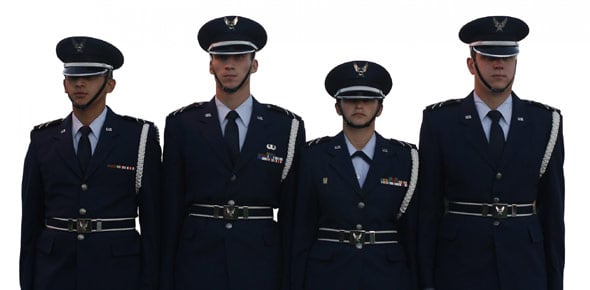What are among the most problematic OPSEC vunerabilities in the Air...
What computer software is designed to collect personal information...
How does the Air Force organize, train, equip, and sustain the best...
An accreditation decision which allows a system to operate in an...
Data aggregation is defined as the
Which of the following is defined as the legal authority exercised...
The reason information is collected best describes which mandatory...
Final reports of a COMSEC incident are due
What best describes an unintended signal or noise appearing External...
Waves that travel thorugh the air in a straight line (line-of-sight)...
An accreditation decision which permits an information system to...
Which best describes the definition of a unity type code (UTC)?
Deployment execution and unit personnel preparation are...
Which form is used as a visitor register log to record visitors into...
What is the COMSEC program designed to do?
What are the three types of COMSEC incidents?
At which NETOPS level is responsibility for the worldwide management...
Which of the following security programs is defined as a process of...
Specific facts about friendly activities, intentions, capabilities or...
Which characteristics hsould proposed theater deployable...
Radio waves travel thorough free space at the speed of light and can...
One of the disadvantages of line-of-sight primary mode of radio...
What specific restrictions can a designated approving authority (DAA)...
Which security program applies discipline measures and controls to...
Which resources designated priority is provided when the level of...
Which wave transmission is very effective for long-distance...
Disclosure of information that would result in the loss, misuse,...
What form is annotated at the end-of-day secuirty check to ensure...
What organization assigns COMSEC incident reports case numbers?
An unclassified term referring to technical investigations for...
At which NETOPS level are networks managed at the local level?
Personnel conducting end-of-day security checks will make sure...
TDC is composed of which three major components?
Which is a suite of modules and accessory kits that serve as the...
Which airborn platform collects real-time positioning and tracking...
Which of the following OPSEC steps would dynamic situations...
An investigated or evaluated incident that has been determined as...
What form is used as a cover sheet to protect Privacy Act material?
Which form is used with a transfer report to accompany a COMSEC...
Which form would you use to properly label removable storage media...
Which of the following is a DOD directed integrated joint command and...
Which form would you use to properly label removable storage media...
Which AOC area support team provides staff support to the Chief of AOC...
An uninvestigated or unevaluated occurence that potentially...
Which form would you use to properly label removable storage media...
Which of the following is used to collect and store the data of...
Which of the following is the Air Force computer system used for UTC...
In which of the following OPSEC steps that you would inform the AFOSI...
Which condition requires the mandate of increased monitoring of all...
When was the first Air Force OPSEC program introduced?
The top secret control officer (TSCO) uses which form for the purpose...
Which is the primary system used for analyzing dynamic intelligence,...
In which OPSEC indicator would an abrupt changes or cancellations of...
Which of the following provides the guidance necessary to manage the...
Deviating from normal procedures would fall under which OPSEC...
Before obtaining access to classified material, which document must be...
Which resources designated priority is provided when the level of...
What DOD agencies refine tactics, techniques, procedures, and...
Which is a development program focused on providing exploitable...
Which resources designated priority is provided when the level of...
Which frequency range is used for SHF band designation?
The Air Force Information Assurance(IA) Awareness Program is detailed...
When a risk of a network system attack has been identified, which...
Which area support team makes sure servers, workstations, peripherals,...
Which frequency range is used for the EHF band designation?
Which database is used for the purpose of coordinating the movement of...
Who has the mission to provide fast reaction to immediate requests...
Which of the following OPSEC steps would program managers and...
Official guidance on individual security clearances and permitting...
Which document provides guidance on the Information Security Program...
Which condition permits non-essential networks to be taken offline and...
Which are used as the main propagation modes of transmissions for...
Guidance for posting information on AF web sites is outlined in
Which are used as the primary transmissions of direct radio waves?
Which frequency range is used for UHF band designation?
Which of the following has the primary function of coordinating and...
Where would you find guidance on how to properly store, control,...
















